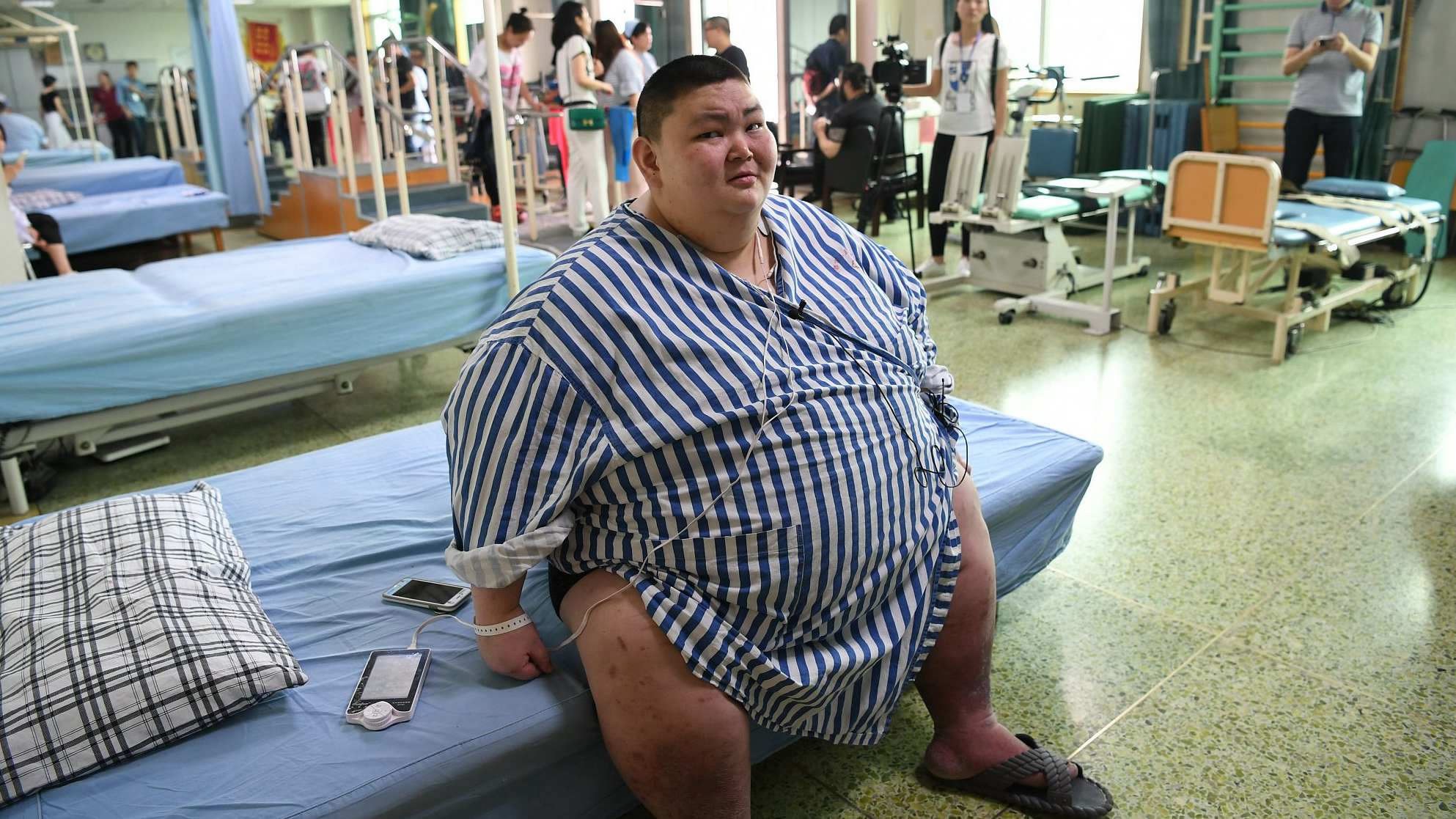The fattest man picture has captivated the world's attention, sparking curiosity and raising important questions about health, body image, and human resilience. This image, which features individuals with extraordinary body sizes, tells a powerful story about the challenges faced by people living with obesity. In this article, we delve into the significance of these images, the stories behind them, and the broader implications for public health.
The image of the fattest man often evokes strong emotions and reactions. It serves as a reminder of the complexities surrounding obesity and the societal perceptions that accompany it. Understanding the context and the individuals behind these images is crucial for fostering empathy and promoting healthier discussions about weight and wellness.
In this comprehensive article, we will explore the story behind the fattest man picture, the medical aspects of extreme obesity, and the societal implications of such images. By examining both the personal and public dimensions of this phenomenon, we aim to provide valuable insights and promote a deeper understanding of this topic.
Read also:Exploring Redgifscom Api Your Ultimate Guide To Accessing Highquality Gif Content
Table of Contents
- Biography of the Fattest Man
- Health Implications of Extreme Obesity
- Social Perception of Obesity
- Medical Treatment and Management
- Impact of Media on Obesity Awareness
- Building Support Networks for Individuals with Obesity
- Case Studies of Individuals in the Fattest Man Picture
- Preventive Measures and Public Health Initiatives
- Psychological Effects of Obesity
- Conclusion and Call to Action
Biography of the Fattest Man
The term "fattest man picture" often refers to individuals like Manuel Uribe, a Mexican man who was once recognized as the heaviest person in the world. His journey with obesity is both inspiring and challenging, offering a glimpse into the life of someone dealing with extreme weight issues.
Key Facts About Manuel Uribe
| Full Name | Manuel Uribe Garza |
|---|---|
| Birthdate | June 19, 1965 |
| Country | Mexico |
| Highest Weight Recorded | 567 kg (1,250 lbs) |
| Occupation | Factory Worker |
Manuel Uribe's story gained international attention when he was featured in the Guinness World Records as the heaviest person alive. His weight severely impacted his mobility, requiring specialized medical care and support from his community.
Health Implications of Extreme Obesity
Extreme obesity, as depicted in the fattest man picture, poses significant health risks. These include cardiovascular diseases, diabetes, respiratory issues, and mobility challenges. According to the World Health Organization (WHO), obesity is a global epidemic affecting millions of people worldwide.
Common Health Issues Associated with Obesity
- Heart Disease
- Type 2 Diabetes
- Hypertension
- Obstructive Sleep Apnea
- Joint Problems
Addressing these health concerns requires a multidisciplinary approach, involving medical professionals, nutritionists, and mental health experts.
Social Perception of Obesity
Social perceptions of obesity are often negative, leading to stigma and discrimination. The fattest man picture highlights the need for greater awareness and understanding of the complexities surrounding weight and health. Societal attitudes can significantly impact an individual's mental and emotional well-being.
Challenging Stereotypes
Efforts to combat obesity stigma include promoting positive body image, encouraging empathy, and fostering inclusive conversations about health. Organizations like the Obesity Action Coalition work tirelessly to advocate for individuals affected by obesity.
Read also:Boyzz To Men Dead The Untold Story Of The Legendary Boy Band
Medical Treatment and Management
Medical treatment for extreme obesity involves a combination of lifestyle changes, medication, and surgical interventions. Bariatric surgery, for instance, has proven effective in helping individuals achieve significant weight loss. However, the decision to undergo such procedures requires careful consideration and consultation with healthcare professionals.
Types of Bariatric Surgery
- Gastric Bypass
- Sleeve Gastrectomy
- Gastric Banding
Each procedure has its benefits and risks, and the choice depends on individual health needs and preferences.
Impact of Media on Obesity Awareness
Media plays a crucial role in shaping public perceptions of obesity. The fattest man picture often garners significant media attention, influencing how society views individuals with extreme weight issues. Responsible media coverage can help educate the public and reduce stigma.
Best Practices for Media Coverage
Journalists and content creators should prioritize accuracy, sensitivity, and respect when reporting on obesity-related topics. Highlighting success stories and emphasizing the importance of health over appearance can foster a more positive narrative.
Building Support Networks for Individuals with Obesity
Building a strong support network is essential for individuals dealing with obesity. Family, friends, and support groups can provide emotional encouragement and practical assistance. Additionally, mental health professionals can help address the psychological aspects of obesity.
Resources for Support
- Local Support Groups
- Online Communities
- Counseling Services
These resources can empower individuals to take control of their health and well-being.
Case Studies of Individuals in the Fattest Man Picture
Examining case studies of individuals featured in the fattest man picture offers valuable insights into their experiences and challenges. Each story is unique, highlighting the diverse paths individuals take in managing their weight and health.
Manuel Uribe's Journey to Recovery
Manuel Uribe's story of resilience and determination is a testament to the power of community support and medical intervention. With the help of his family and healthcare team, he successfully lost a significant amount of weight, improving his quality of life.
Preventive Measures and Public Health Initiatives
Preventing obesity requires a comprehensive approach involving education, policy changes, and community involvement. Public health initiatives aim to promote healthier lifestyles and reduce the prevalence of obesity worldwide.
Strategies for Prevention
- Encouraging Physical Activity
- Promoting Balanced Nutrition
- Implementing School-Based Programs
These strategies, supported by government and non-profit organizations, can make a significant impact on reducing obesity rates.
Psychological Effects of Obesity
The psychological effects of obesity can be profound, impacting an individual's self-esteem, mental health, and overall quality of life. The fattest man picture often brings attention to these emotional challenges, underscoring the need for holistic care.
Addressing Mental Health Concerns
Mental health professionals play a vital role in supporting individuals with obesity. Therapy, counseling, and peer support can help individuals overcome the emotional barriers associated with weight management.
Conclusion and Call to Action
The fattest man picture tells a powerful story about the complexities of obesity and the resilience of individuals facing extreme weight challenges. By understanding the health implications, social perceptions, and available resources, we can work towards creating a more supportive and inclusive society.
We invite you to share your thoughts and experiences in the comments below. Together, we can promote awareness, reduce stigma, and support those affected by obesity. For more information on this topic, explore our other articles and resources dedicated to health and wellness.
References:
- World Health Organization. (2021). Obesity and Overweight. Retrieved from https://www.who.int
- Obesity Action Coalition. (2022). Understanding Obesity. Retrieved from https://www.obesityaction.org


